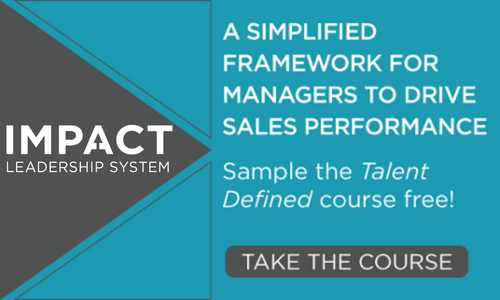
When it comes to sales, you might feel as if there are many factors that are outside of your control. To an extent this is true, but when it comes down to it – you actually wield more influence over the situation than you think.
Once you realize what you can control, and what you can influence, you will feel more confident approaching prospects and delivering solutions and recommendations to your clients.
Factors You Can Control
1. A Strong Valid Business Reason (VBR)
When approaching prospects and clients, be sure to present yourself as a trusted and valued advisor with a strong Valid Business Reason. By using Empathy + Expertise + Problem-solving, you control the narrative of why someone should meet with you.
2. Your Brand
It’s no secret that buyers have access to more information than ever before and that includes information regarding sellers. One of the places they turn to is LinkedIn. Be sure to keep your profile up to date with relevant information and recommendations that highlight and demonstrate your expertise. Building online credibility helps your prospects develop an early sense of trust.
3. Rich Online Content
While they are online, be sure clients and prospects have access to content that highlights your products and their proven results. Providing white papers, case studies, and blog posts that demonstrate value helps potential customers quickly find information.
Having an active stream on your LinkedIn is a great way to provide this information, but also be sure to send targeted messages to clients and prospects (be sure it is relevant and not just a content dump!)
4. Don’t be “Salesy”
Remember the old business adage: “People don’t like to be sold – but they love to buy.” And people like to buy from people they trust and like.
Sales is a people business and building authentic relationships is a key ingredient to a successful sales career. Your conversations and interactions with buyers should focus on the business value you bring as a partner in the business, not as solely a provider of goods and services.
Factors You Can Influence
The factors mentioned above seem like an obvious sphere of control, but you may wonder about the less straightforward areas, such as whether or not they need your product/service, their budgets, and if they are even reading the content and branding you are providing. While you don’t have direct control over these factors, you can most certainly influence them.
1. Buyer Need
A way to influence need is to shift the focus to the results your offering brings. The need may not be immediately apparent to the buyer, but if you tell the story of a desired future state that connects to their business goals, the need to buy will follow. Educate your buyers on how your partnership will improve their business and create a why for doing business together.
2. Budget
“It’s not in the budget”. The phrase that every salesperson hears at one time or another. The truth is, what is actually in the budget? Organizations don’t have a crystal ball to know when a great opportunity for partnership will arise.
If you successfully educate and inspire your buyers to create a need, budgets can be restructured and plans for expenditure can be made. As the salesperson, create a situation in which fitting it into the budget is a no-brainer!
3. Awareness
While it’s true that you can’t control what prospects and clients are looking at, you also can’t leave it to chance that they will see something about you, your products, and your outcomes.
Make posting on LinkedIn part of your routines and in your attempt to connect with buyers, use the Don’t Give Up Approach to connecting with prospects. The more relevant and timely the information is, the more likely they will interact with it and raise their awareness.
4. Referrals and Common Connections
The most compelling success stories come from customers who have worked with you and achieved their desired business results. In the world of learning, peer education is an impactful and effective way to elicit behavior change and it is no different in the sales arena.
Hearing from someone who has faced similar challenges and experienced satisfying results that met and exceeded their expectations is a powerful way to influence a buyer’s decision to work with you. Even more impactful, is finding common connections you have with them through LinkedIn or professional groups. They will already have some level of established trust with someone they know, which makes the referral or reference that much more influential.
5. Dissatisfaction
Many prospects you approach may already have someone they are working with, and unless there are glaring problems or inconsistencies, they will most likely say they are satisfied with the current situation.
There are things in life that are working “just fine” and until we see a path that takes us to a better reality, we will just truck along with what we have. But once the possibilities are seen, and the opportunity has been presented to follow a new path – dissatisfaction with the current state has begun. You should never cast a negative light on a competitor, but you can paint the picture of a new reality and level of satisfaction should they work with you.
Conclusion
Just like anything in life, you can’t control everything. As a salesperson, if you know what you can control and what you can influence and manage accordingly, you will be on the road to successful relationships and business outcomes for you and your clients.




